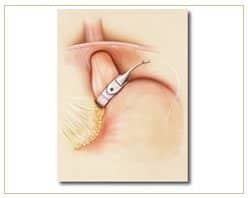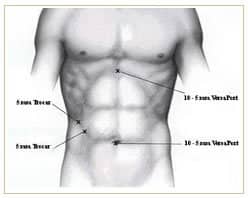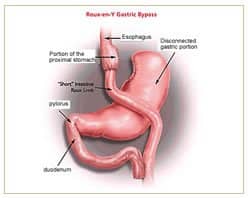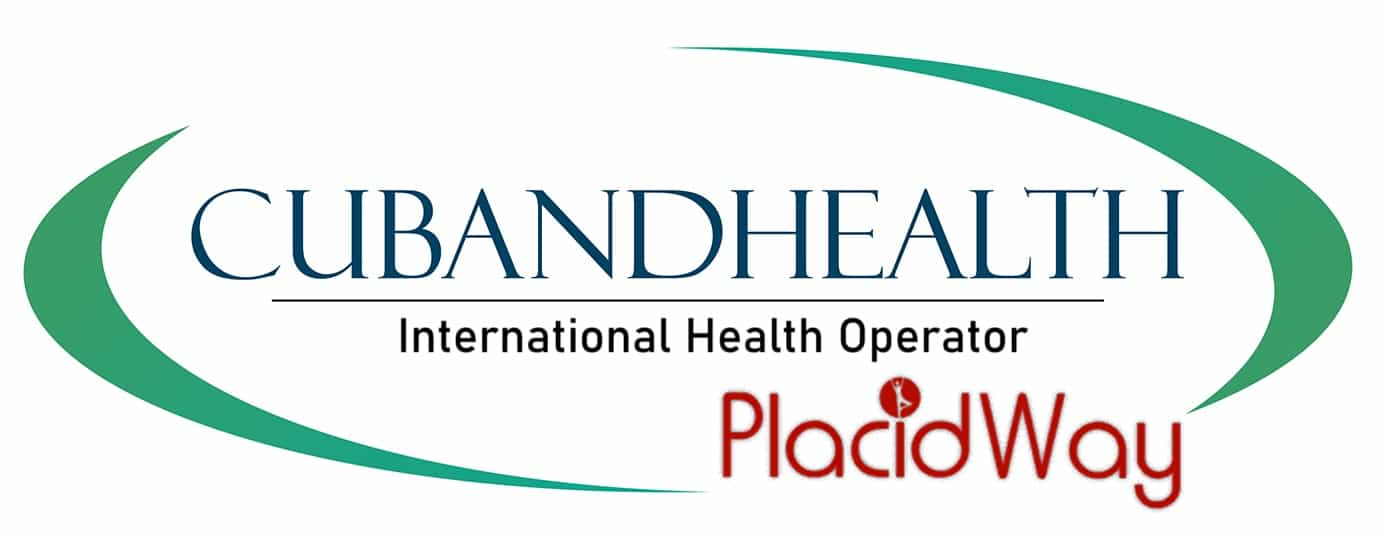Request a video call
Confirm Your Virtual Consultation
Panama Gastric Surgery Center Profile Overview
Gastric Banding • Gastric Sleeve • Gastric Bypass
Are you suffering from severe obesity? which may be causing you to have:
-
Depression
-
Coronary disease
-
Joint arthritis
-
Sleep apnea
-
Hypertension
-
Diabetes mellitus
It is estimated that in the United States, 5% of the men (2.9 millions) and 7.2% of the women (4.5 millions) suffer from morbid obesity.
If you are with BMI (Body Mass Index) of 40 or with BMI ranging 35 to 40 and suffering from medical complications related to overweight, you are candidate for obesity surgery.
While surgery is the last resort for those that have not been able to lose weight through diets and exercise, many clinical trials have demonstrated that when performed by good hands, it is a safe and effective method to loose weight.
You should consider Laparoscopic techniques for surgeries such as gastric band, gastric bypass, or vertical gastrectomy. The post-operative recovery in such surgeries is considerably short compared to open procedures. Morbid obesity is a disease and should be treated as seriously as any other medical problem.
Panama Gastric Surgery Center offers following obesity treatments:
Gastric Banding
The gastric band (LAP-BAND), an FDA approved device, is surgically implanted and adjusted around the stomach usually via laparoscopy. A new small stomach is created over the band with the majority of the stomach underneath the band. This reduces the area of food deposit in the new stomach to a small area. You will feel satisfied (“full”) promptly and the sensation will remain for a long period of time.
Gastric Bypass
The Gastric Bypass surgery is ideal for patients with severe obesity and that have to loose a great amount of weight to attain ideal weight. The research shows a reduction of 40-50% of the excess weight in patients with gastric banding versus a 66-70% of weight loss with the gastric bypass after a year.
Vertical Gastrectomy Sleeve Type
Vertical gastrectomy Sleeve type is a relatively new procedure that consists of removing 66% of the stomach, decreasing its capacity considerably. This procedure is being recommended to patients that are extremely obese (BMI greater than 60 kg/mt²) and that perhaps might not resist a prolonged surgery.
Gastric Surgery Package Services include:
-
Bilingual Assistant & Transportation
-
Doctor’s fees
-
Surgery room charges
-
Supplies and disposable materials
-
Anesthesia
Gastric Surgery Package Services Prices:
|
Procedure |
Price |
|
Gastric Banding Surgery |
USD $9,100 |
|
Gastric Sleeve Surgery |
USD $10,700 |
|
Gastric Bypass Surgery |
USD $12,400 |
Please click here to request additional information about the packages offered by Panama Gastric Surgery Center
Panama Gastric Surgery Center Treatments Offered
Gastric Banding
The gastric band (LAP-BAND Inamed Corporation) is a device that is implanted, and adjusted which assists patients in the process of losing weight. Utilization of this method started in Europe, Israel and Australia more than 15 years ago. There are more than 100,000 patients in the world that have undergone this surgery. In 2001, the Food and Drug Administration Division approved its use in the United States. The only surgeons that can place the band are those that have completed authorized training.
Lap-Band system consists of an adjustable silastic band that is placed surgically around the stomach, usually via laparoscopy and under general anesthesia. A new “small stomach� is created over the band with the majority of the stomach underneath the band. This reduces the area of food deposit in the new stomach to a small area. The opening towards the rest of the stomach is limited by the band and it is adjustable. The patient will feel satisfied (“full�) promptly and the sensation will remain for a long period of time. The band is connected by a silastic tube to a reservoir that is placed under the skin during surgery. The band is adjusted by adding or eliminating liquid from the subcutaneous reservoir using a fine needle that is inserted through the skin. This procedure is almost painless, does not require general or local anesthesia and it is performed in the radiology section of a hospital or in the doctor’s office.
This surgery is scientifically proven; but the art is not only in placing the band but in accomplishing a good follow-up of the patient. That is why in some of the centers that train surgeons in the placement of bands a minimum of time that may range up to 2 weeks is being required to calibrate the band adequately.
This information is very important for the patient: If the band is too loose, weight loss will be minimal or nil. If the band is too tight, extraction of the liquid in the reservoir will be required. The ability to adjust the band is a unique feature that is not acquired with the performance of other surgeries. You must be willing to see your physician at least once per month after the surgery to evaluate your progress and determine if there is need to adjust your band. Your physician must be committed to solve your concerns in a timely manner and in a responsible way. Once that relationship is established, the likelihood of complications is minimal.
The majority of the patients are discharged 24 hours after surgery and generally get an x-ray evaluation before discharge. You will be placed on a restricted diet during the first days. Two weeks after, you will be placed on a soft diet.  The band is adjusted 4 to 6 weeks after the surgery; future adjustments will depend on your weight loss and development. During the first two weeks we will try to prevent vomiting as much as possible. If there should be a problem, for example, the patient does not tolerate the food restriction or simply does not want to have the band anymore, it can be removed via laparoscopy. This is another feature that other surgeries do not posses.
Gastric Bypass
Gastric Banding consists of a procedure that removes the upper portion of the stomach leaving a small reservoir with a 25 ml capacity and at the same time, the reservoir is connected to a segment of the small intestine that has a length of approximately 1.5 meters. This intestine will only serve to transport the food to a place where digestion will initiate when food is combined with pancreatic juices (See figure). The gastric bypass combines the restrictive effects with the malabsorption producing a large weight loss in a short period of time. This is the ideal procedure for patients with severe obesity and that have to loose a great amount of weight to attain their ideal weight. The rate of weight loss has been reported to be greater in patients that have undergone gastric bypass than those with gastric banding or vertical gastrectomy but all the procedures have demonstrated good results. The majority of the researches show a reduction of 40-50% of the excess weight in patients with gastric banding versus a 66-70% of weight loss with the gastric bypass after a year. Weight loss continues in all the procedures for 18 to 24 months after the surgery is performed.
Alter the bypass surgery, there may be nutritional deficiencies of Vitamin B-12, folic acid and iron. If you take the necessary vitamins and supplements, these may be prevented. Another potential effect of the gastric bypass is the Dumping Syndrome which consists of abdominal pain, colic, sweating, and diarrhea that typically happen after the patient ingests foods that are rich in sugars. Dumping Syndrome can be prevented by avoiding sugar ingestion.
Vertical Gastrectomy Sleeve Type
Vertical gastrectomy Sleeve type is a relatively new procedure that consists of removing 66% of the stomach decreasing considerably its capacity. Obese patients need to fill their stomach in order to create a stimulus or message indicating that enough food had been ingested. When two thirds of the stomach are cut out, the patient will have the same feeling of satiety with a small amount of food. This procedure is being recommended to patients that are extremely obese (BMI greater than 60 kg/mt²) and that perhaps might not resist a prolonged surgery. Weight reduction is seen during 12 to 18 months. If after this time, the patient has lost weight notably but not sufficiently, the patient may be taken back to the operation room and complete a gastric banding procedure with an improved health condition and with the capacity to resist a longer surgical procedure. On the other hand, if the patient has lost enough weight and is close to the ideal weight, no other procedures are added and in these cases this procedure would compete with gastric banding in the sense that it is a pure restrictive procedure but without foreign bodies, without calibrations and without the control and follow-up by the physician that is required for other surgeries. It is usually performed using instruments with linear cutters that shoot three lines of staples on each side to guarantee an impermeable seal. The patient remains in the hospital for two days before being discharged.
Please click here to request additional information about the packages offered by Panama Gastric Surgery Center
Panama Gastric Surgery Center Certificates, Accreditations, Qualifications Treatments Offered
Dr. Moisés Chitrit is a General Surgeon renowned initially for being the first physician in the Republic of Panama to practice Trauma Surgery (Emergency) after advanced training in Colombia (University Hospital of el Valle, Cali) and in the United States (Shock Trauma Center, Baltimore, Maryland y en el Detroit Receiving Hospital, Detroit, Michigan) in his sub-specialty. Upon his arrival to Panama he embraced the treatment of seriously ill patients (life threatened) for a long time with outstanding results. Having excelled in the management of these types of problems he is part of the selected group of surgeons that maintain a solid, prestigious and abundant practice.
Aware that in Laparoscopic Surgery (minimally invasive) laid the future of Gastrointestinal General Surgery, Dr. Chitrit developed this art in order to offer his selected group of patients a wide spectrum of choices and to provide the same level of care as in the great worldwide surgical centers. Dr. Chitrit has performed laparoscopic procedures of great complexity during the last years, such as resection of gastric tumors of (stomach), colon tumors (large bowel), small bowel, anti gastroesophageal reflux surgery, laparoscopic biliary surgery, laparoscopic hernia repairs and other procedures. Recently, Dr. Chitrit has been accepted as Member of the International Society of American Gastrointestinal and Endoscopic Surgeons (SAGES) and he is also a member of a long list of scientific societies at national and international level.
At this time he is the Director of the Centro Quirúrgico para el Control de Peso (Weight Control Surgical Center) devoted to the total management of the obese patient. Initially, Dr. Chitrit completed postgraduate training in Obesity Surgery, specifically in the application of Laparoscopic Gastric Banding, being among the privileged alumni of Dr. Rafael Alvarez Cordero, one of the fathers of obesity surgery in Mexico and founder or the Obesity Society of Mexico. After that, he trained in Bypass Gastric Surgery and he is capable of offering multiple surgical procedures to patients afflicted with severe obesity.
Please click here to request additional information from Panama Gastric Surgery Center
Panama Gastric Surgery Center Testimonials
My name is Richard K. Griffith. I am a retired, 53 year-old American who has resided in the Republic of Panama since 2001. I first met Dr. Chitrit in 2004 when my personal physician introduced us.
In August 2007, I was having problems with my health which were related to my obesity. I was diagnosed with sleep apnea, type II diabetes, circulation problems and high blood pressure. Dr. Chitrit and I met and he determined most of my health problems were related to my obesity. We discussed solutions to the problem of my obesity and decided the best option was for me to undergo a gastric-bypass operation.
Dr. Chitrit explained to me the seriousness of this operation and possible problems, however to me, despite the possible complications this operation was still my best option. In September 2007, I underwent surgery and Dr. Chitrit performed the gastric-bypass operation with no complications.
At the time of the operation I weighed over 400 pounds. Eight months later, I have lost 140 pounds and am still losing 12-15 pounds per month. Most of my previous medical problems have all but disappeared. Dr. Chitrit sees me on a regular basis to monitor my general health condition and weight-loss progress. During one of these visits, he discovered another medical problem, unrelated to the gastric-bypass operation which could have had serious consequences in years to come.
I do not only consider Dr. Chitrit my doctor and an excellent surgeon, but also a personal friend. He took the time to explain to me the seriousness of my condition and always had the time to answer any and all questions I had. The bottom line is this; I owe my life to Dr. Chitrit, as I feel if I had not had him perform the gastric-bypass I would not be alive today.
Please click here to request additional information from Panama Gastric Surgery Center
Location

About Medical Center
- Speciality: Obesity/Bariatric Surgery
- Location: Patients Info Center, Panama City, Panama
- Medical Center Prices: Panama-Gastric-Surgery-Center
- Overview: Offering affordable gastric banding & laparoscopic surgery for obesity treatment to medical tourist in Panama.





















.png)






.png)


Share this listing